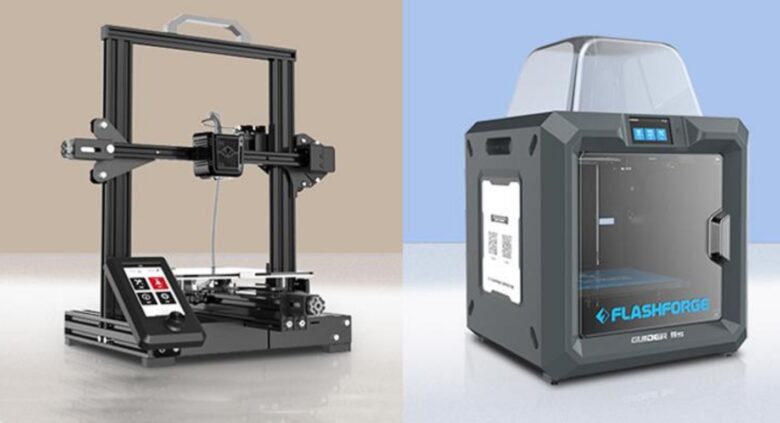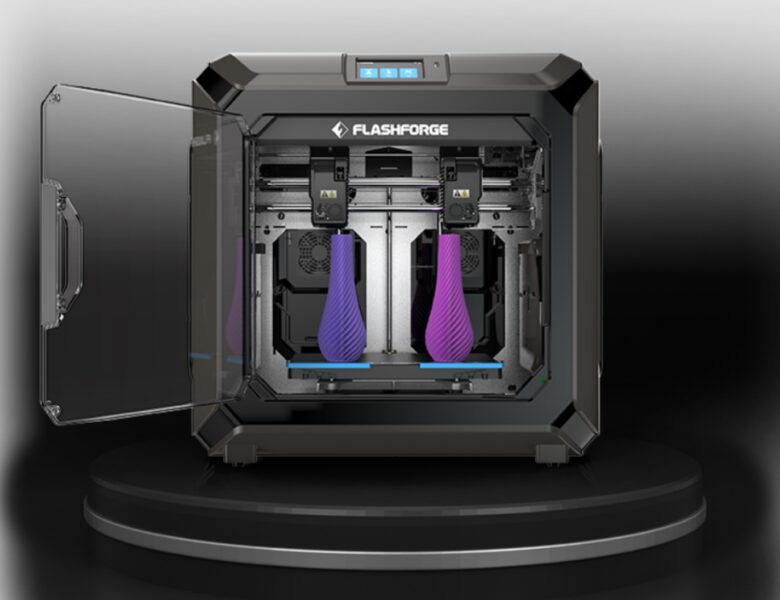Before selecting a 3D printer, you need to make it clear on what situation will you use a 3D printer. Different application scenes demand different types of 3D printers. Whether for personal use or for industry-production use? For 3D model prototyping or for batch production? In the professional-use level, potential users often connect directly with the brand side, asking for customized demand for a 3D printing solution and the expenditure for 3D printer devices is often high, while in the personal-use level, 3D printer users often seek a desktop unit that is affordable and easy to use.
Contents
Different Application Scenes Demand Different Types Of 3D Printers
In terms of personal-use 3D printers, here are some typical utility scenes for reference.
Using it as a consumer electronic. People in modern life have their mobile phone, iPad, computer, game console, laptop. Boring with them? Then get a 3D printer! Desktop 3D printers are electronic devices, with features of WiFi connection, online webcam, cloud storage and touch screen. They are often small, lightweight, and compact. Just put them aside by your computer. Put on a filament of your favored color and start creating! The printing process and printouts all could be shared with other peers!
As a premium high-tech gift. Presuming that you’re going to visit a friend but have no idea what gift is proper for them? A 3D printer as the gift! You can select a starter-level 3Dprinter, with safe sound outlook and easy-to-use features.
As household appliance. In this application scene, you are treating a 3D printer as a home-use tool, to self-make home use gadgets, such as paste hooks behind doors, garage kits, your favorite arts crafts, etc. Practical usage and cost-effectiveness are what you consider the most. The gantry-style 3Dprinter, compared with the enclosed-style 3D printer, is the desirable type.

▲ Gantry-style 3D printer ▲ Enclosed-style 3D printer
Excellent 3D Printers Recommended To Personal Users
To select an excellent 3D printer, you are suggested to find well-known brands that own engineers and technologists who have perfected the art of 3D printer manufacturing and launched numerous successful products in the market. Each 3D printer is designed with perfection and is loaded with a variety of advanced features and modern technologies. Following is a brief review of some excellent 3D printers for personal users that have captured the market and have made a mark due their reliability and optimum performance.
Finder 3 3D printer

Designed for producing high-quality prints, the Finder 3 3D Finder has proven to be a reliable platform in all use cases. The Finder 3 comes with a 200 mm vertical Z-axis height that is suitable for a wide range of user requirements. The printer can cater to a diverse set of 3D printing needs with its easily removable and replaceable platform. Users can select and choose either the removable glass platform or the PEI magnetic steel platform.
Finder 3 supports multiple types of filaments including TPU 95A, HIPS, ABS, PLA, and PETG filaments. The intelligent sensor technology in the printer provides power loss recovery and filament run-out reminders. This model has specifically been designed for cost-efficient 3D printing accessible to everyone. Finder also supports third-party slicing software and can provide multi-data transmission. There’s no loss in 3D printing progress while using this machine as it can resume 3D printing after power failure. The 3D printer also has a broad range of connectivity options with USB and Wifi connectivity options onboard.
Creator 3 Pro 3D printer

The Creator 3 Pro is yet another remarkable machine produced for better printout quality. This machine is highly popular among users and comes with independent dual extruders for an enhanced 3D printing experience. The machine supports water-soluble materials printing and is suitable for a wide range of industries due to its pinpoint precision (up to 0.2 mm).
This model offers a print volume of 300x250x200 mm and the extruder can support temperatures up to 320 °C. Like other excellent 3D printers, this model is also compatible with a wide range of filaments. To ensure global access, this model supports 3D printing over the cloud. The Creator 3 Pro is provided with a dual-fan configuration that allows users to control the wind speed for better print quality. This model is tailored for accurate leveling and better printing positioning.
Adventurer 4 3D printer

The Adventurer-4 3D printer is an exceptional workhorse and is designed for large-volume printing and auto-leveling. With its built-in camera, this machine allows users to remotely monitor the entire 3D printing process. To support large-volume printing, this model can accommodate a 1 kg/roll filament. The overall 3D printing is seamless with this machine because it can filter out dust and unpleasant odors. The Adventurer 4 proves to be a versatile platform and finds its application in the educational sector where it is utilized for 3D printing teaching and training.
The printer is also popular among 3D printing enthusiasts and hobbyists because it allows experimentation and building unique 3D printed models at home. Due to the reliability and repeatability of its results, the Adventurer 4 has proven to be the premium choice for engineers and designers allowing real-time testing of models and prototypes.
In conclusion
Strong manufacturers of 3D printer always have a global outreach with its products reaching nearly 100 countries across the globe. They have ensured premium service to users around the world through partnerships with hundreds of brand dealers in dozens of countries. Flashforge is such a brand that has been able to capture and hold a huge market share with its 3D printer products targeting areas like medicine, channel construction, R&D, education, and the dental industry.
By the way, excellent 3D printer manufacturers output a full set of 3D printing service. They not only secure users an high-quality user-friendly 3D printer unit, but also matching it with 3D model slicing software, after-sale supports, and matched 3D print materials. Those software and hardware infrastructure combined with in-depth knowledge of additive manufacturing have enabled players in industries such as healthcare, art and design, automotive, consumer goods, and aerospace, to create innovative 3D printing ecosystems.
